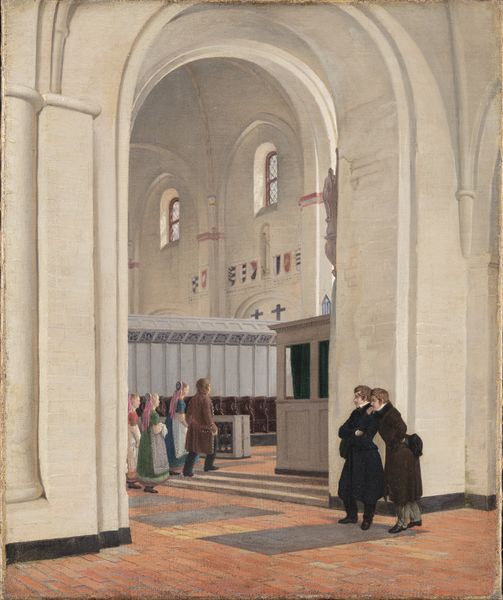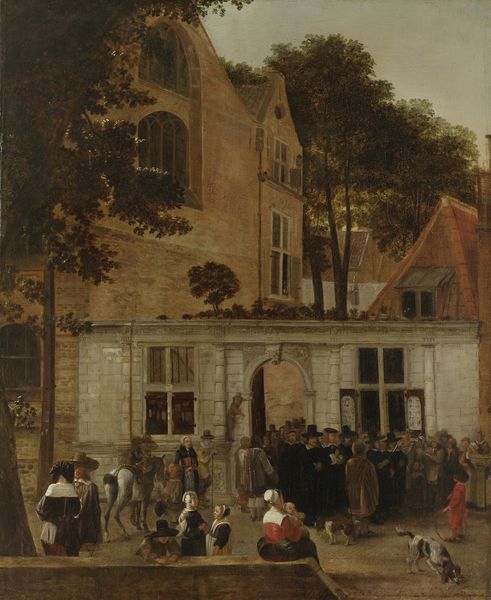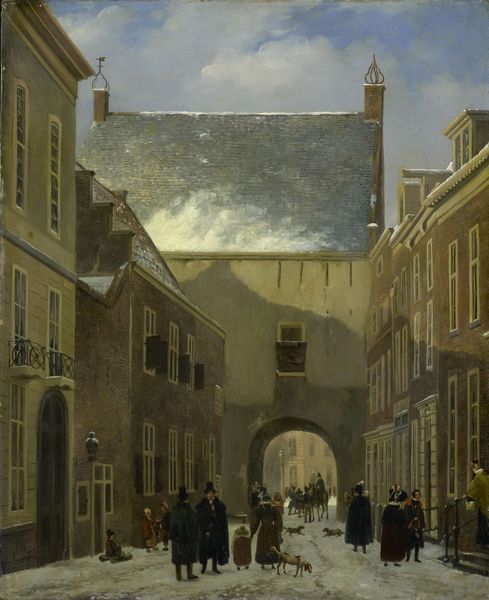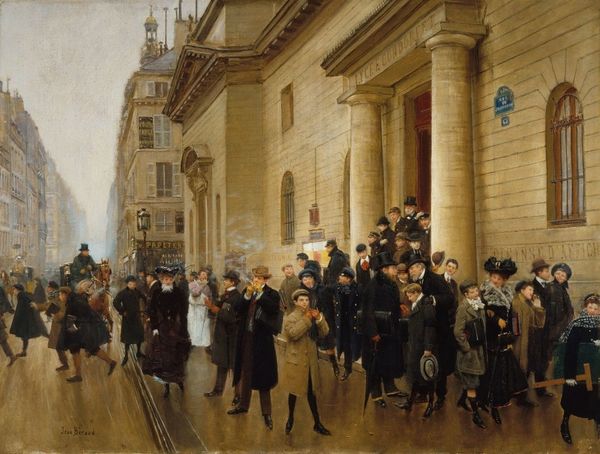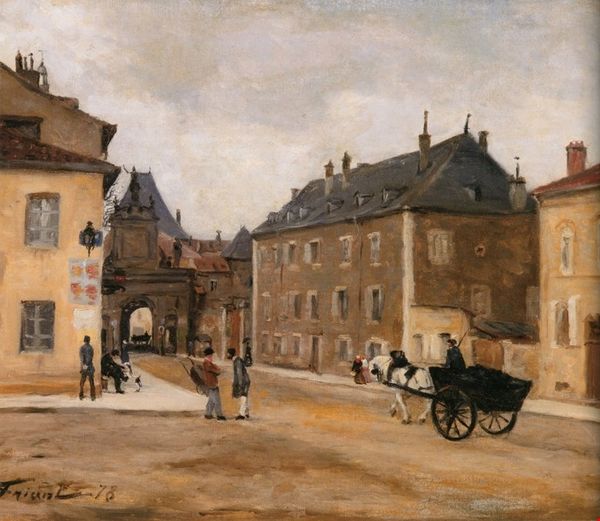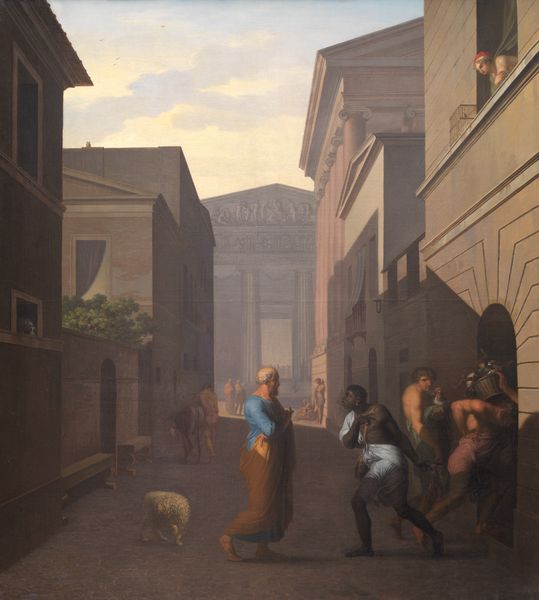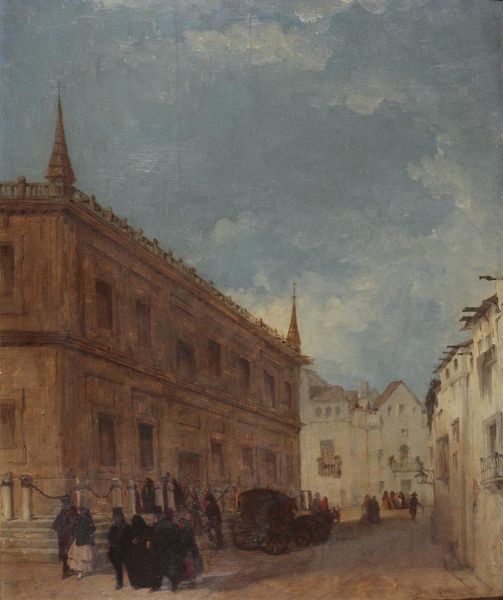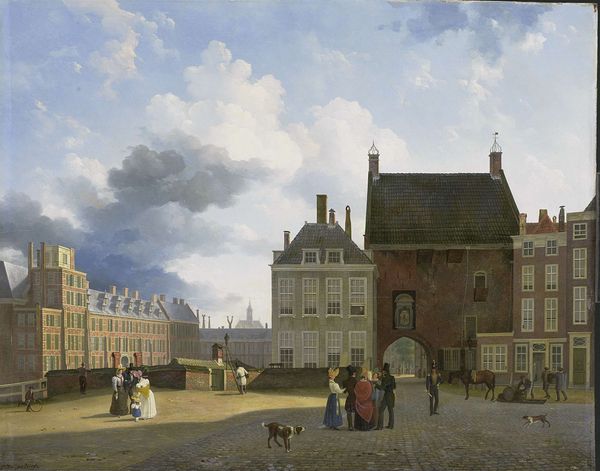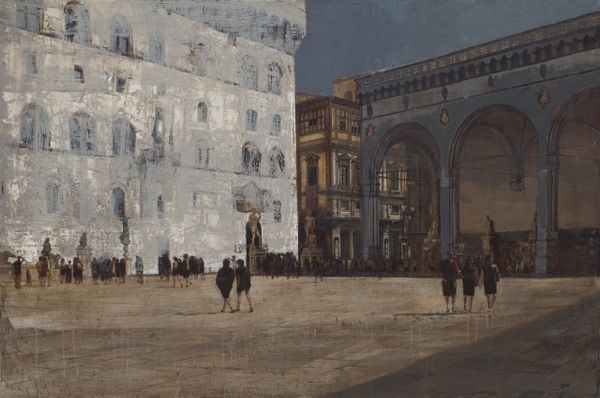
painting, oil-paint, oil
#
portrait
#
baroque
#
dutch-golden-age
#
painting
#
oil-paint
#
oil
#
urban cityscape
#
figuration
#
oil painting
#
city scape
#
urban life
#
group-portraits
#
14_17th-century
#
cityscape
#
genre-painting
Dimensions: 62.2 x 52.8 cm
Copyright: Public Domain
Curator: What strikes me immediately is the energy, the hustle captured here. A hive of activity rendered in muted browns and ochres, it almost vibrates with the unspoken deals happening within. Editor: You’re responding, I think, to the way Berckheyde has positioned the viewers. The work you’re seeing is entitled *The Stock Exchange in Amsterdam*, created circa 1675 to 1680. Job Andriaensz. Berckheyde really sets us as observers looking into the heart of mercantile Amsterdam. These men were creating vast empires for themselves in what some regard as colonial expansion. Curator: Exactly! And that "vibration" you perceive reflects the beginnings of early capital markets. You're drawn into this specific moment but through an intersectional lens, we should also understand the backdrop, right? These fortunes being made here rested on the labor, stolen lands, and exploited resources far beyond this European city center. What appear as mere buildings and crowds has implications beyond anything shown to the naked eye here. Editor: Agreed. Look how the architecture itself plays a role. This isn’t just a portrait of people but of a burgeoning institution and a city. Consider how light emphasizes the architecture – the sun seemingly illuminates and validates these activities, subtly communicating its importance within civic society. There’s such civic pride imbued here in what the painting presents. Curator: Pride purchased at a great cost to others though, isn't it? This supposed golden age for some certainly wasn't for many, that's a significant tension running under its visual harmony. One that many might not know if we’re just passing through the gallery, right? Editor: Precisely. Berckheyde masterfully captures not only the surface of his era but invites contemplation around some underlying social structures too. And understanding these forces through the work becomes really central to a contemporary understanding of paintings like these. Curator: Right, so a seemingly simple genre painting opens to broader stories that consider the unequal distributions of global capital through art-historical, feminist, and post-colonial theory. I walk away with much more to think about now! Editor: Yes. It’s crucial to acknowledge that while Berckheyde provides us with insight into 17th-century Dutch society and what makes these scenes worth remembering, social progress for all involved requires an equally critical eye.
Comments
Join the conversation
Join millions of artists and users on Artera today and experience the ultimate creative platform.
stadelmuseum about 2 years ago
⋮
The Amsterdam Stock Exchange was erected between 1608 and 1611 near the dam, directly over the Amstel. Its inner courtyard was surrounded by an elongated gallery. The municipal coat of arms with the three saltires dominates the view of the north facade chosen by Job Berckheyde. Hundreds of merchants carry out their business transactions in the heart of the commercial and financial centre at the midday hour. In front of the exchange, oranges, newspapers and – in the front building at the right – even paintings are offered for sale.
